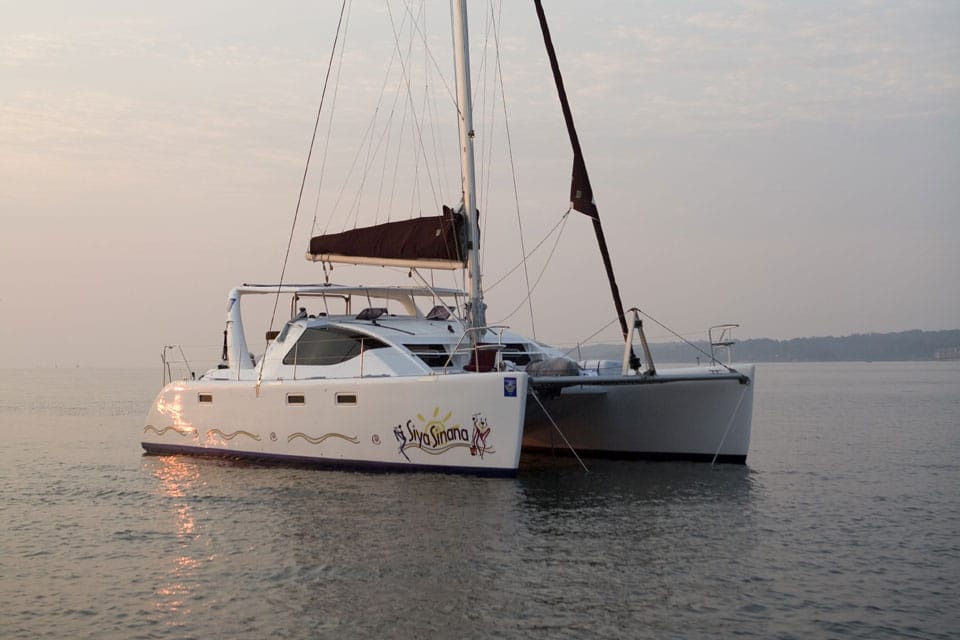Packing four double-berth cabins, two heads, and a large saloon into a 40-foot cat is a daunting task, but designer Angelo Lavranos was up to the challenge. The high-volume, moderate-displacement Admiral 40 would be a good liveaboard cruiser and comes with a list of standard features that remain options aboard many of its competitors.
Built conventionally of hand-laid-up FRP laminate with a vacuum-bagged balsa core and a tabbed hull/deck joint, it’s an expanded version of its predecessor, the Admiral 38. Good attention to detail during the lamination process could be confirmed by poking around in lockers and other out-of-the-way areas where telltale features of the laminator’s art can sometimes be overlooked.
In cross section, the hulls are fairly full, affording significant buoyancy, but the combination of displacement and payload weight caused the stern to drag during the CW Boat of the Year tests.
This could have been an indication that the test boat was floating a little low on its lines or that there was too much weight aft. Later, the builder explained that extensive customization in hull number one did add significant weight; in subsequent models, molded modules resulted in a lighter vessel.
The hardware on our test boat was carefully installed, and balsa core replaced plywood wherever high-compression loads were introduced. The bulkhead supporting the deck-stepped mast and the heavy-duty chainplate structure also showed capable craftsmanship. An efficient traveler system benefited mainsail trim, but as with many cats, there was, in my opinion, too much reliance on rope clutches rather than dedicated winches assigned to key sail-trimming functions.
The electrical and mechanical installation was a cut above the fray, and excellent attention to detail could be found in the way wiring and plumbing was run throughout the boat. The two 29-horsepower Yanmar saildrives and the 4.2-kilowatt genset were also installed well. Tankage on the Admiral 40s includes 105 gallons each for fuel and water; the boat we sailed had a watermaker, making tank size somewhat irrelevant.
The large-main/small-jib sail plan was easy to handle, and during passages a masthead asymmetric spinnaker would add sea miles in a hurry. As with most cruising cats, a breeze of less than 10 knots, more often than not, is cause to turn on the engine and gain a boost by motorsailing at modest rpm. With its small keels rather than dagger boards, the Admiral is a little less capable on the wind, but our test boat did outperform our expectations on a beam reach despite the shifty up-and-down breeze of Chesapeake Bay.
Under power, the relatively small Yanmar engines delivered great maneuverability along with significant speed: 6.4 knots at 2,500 rpm and a blistering 8.4 knots when the throttle was wide open. The handling gear for the ground tackle was first-rate-another good sign of a proper cruising boat.
Add to this a laundry list of standard items that includes a washing machine, the watermaker, a genset, an air-conditioning unit, an autopilot, a radar/chart plotter, an S.S.B., sailing instruments, and the V.H.F.; and all you’d need would be food and a destination.
Ralph Naranjo was a 2008 CW Boat of the Year judge.
Specs
LOA 39′ 11″ (12.17m.)
LWL 37′ 1″ (11.30 m.)
Beam 24′ 0″ (7.32 m.)
Draft 3′ 9″ (1.14 m.)
Sail Area (100%) 1,043 sq. ft. (96.9 sq. m.)
Displacement 18,739 lb. (8,500 kg.)
Water 105 gal. (397 l.)
Fuel 105 gal. (397 l.)
Engines Twin 29-hp. Yamahas
Designer Lavranos Marine Design
Price $425,000
Admiral USA
(954) 713-0412
www.admiralyachts.co.za
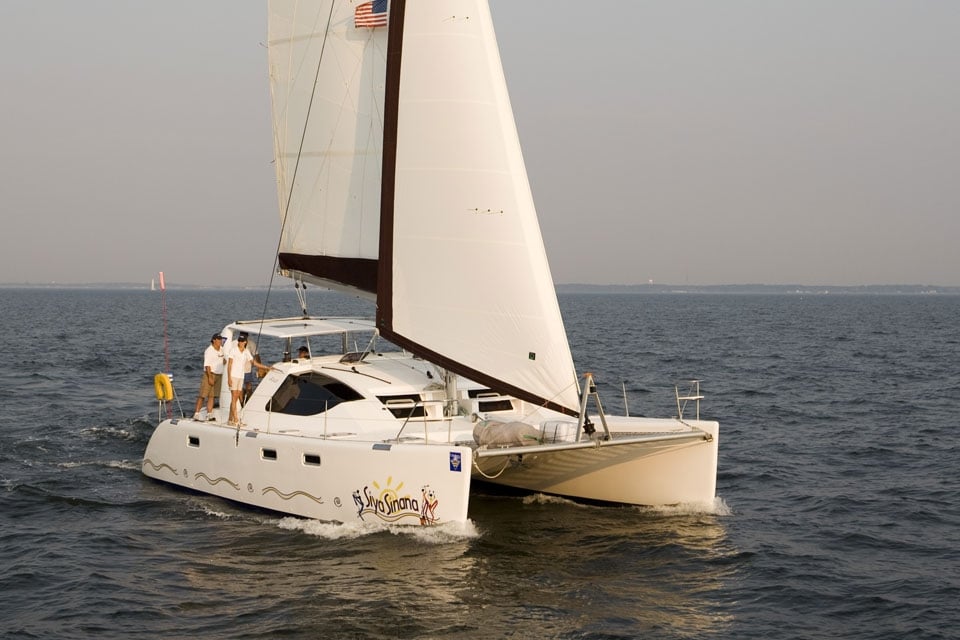
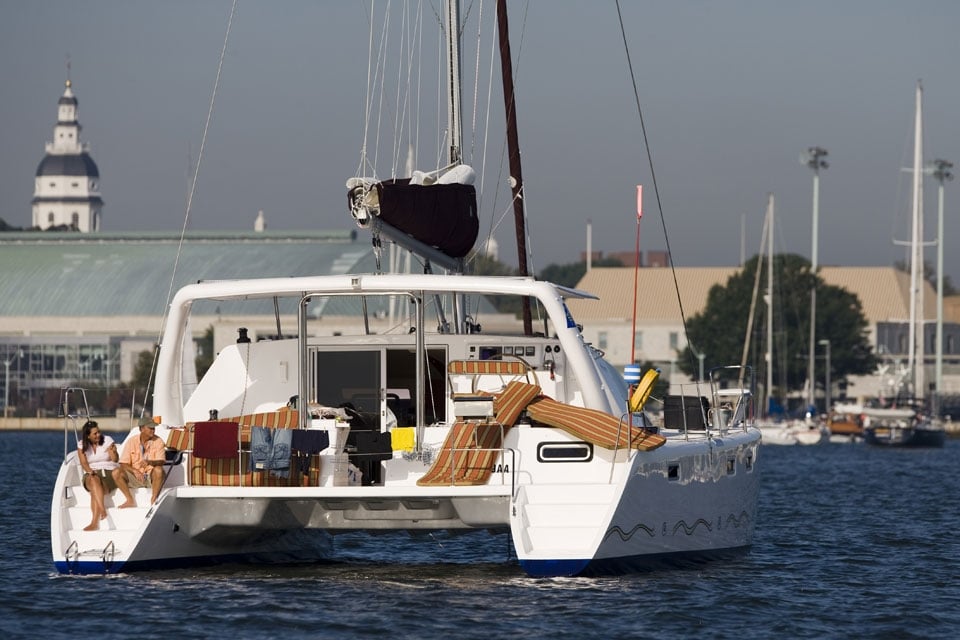
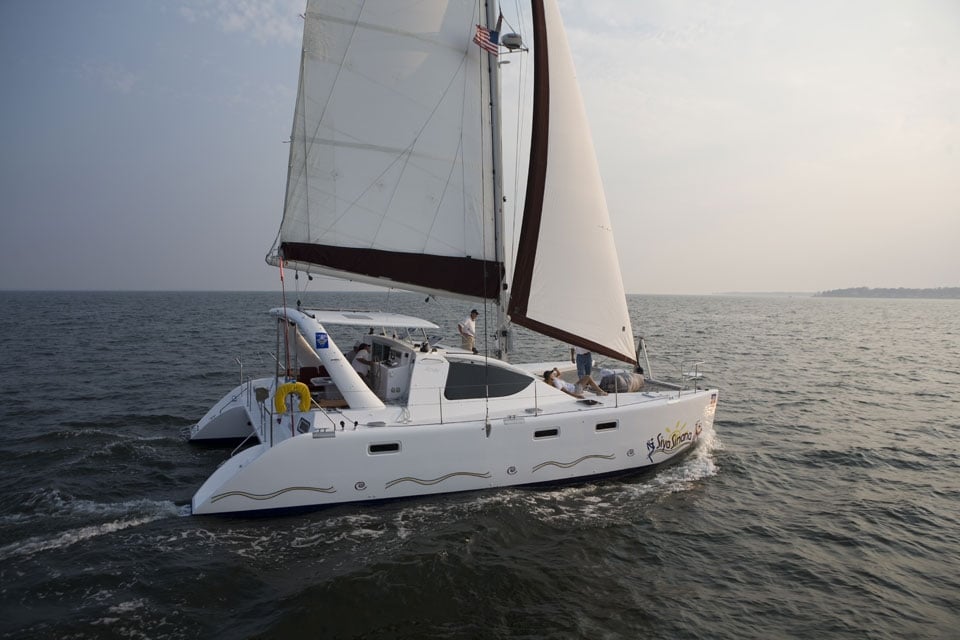
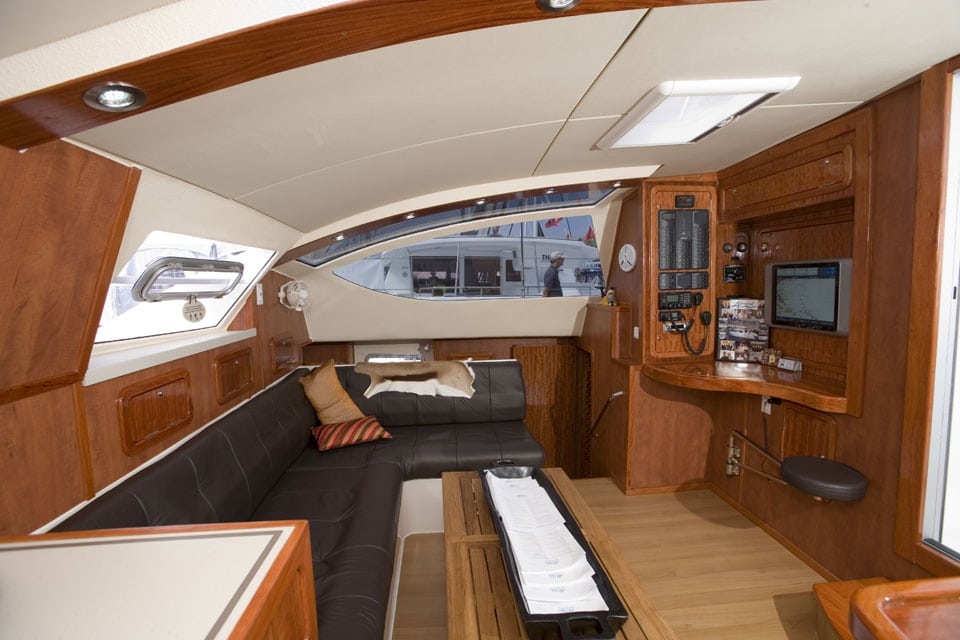
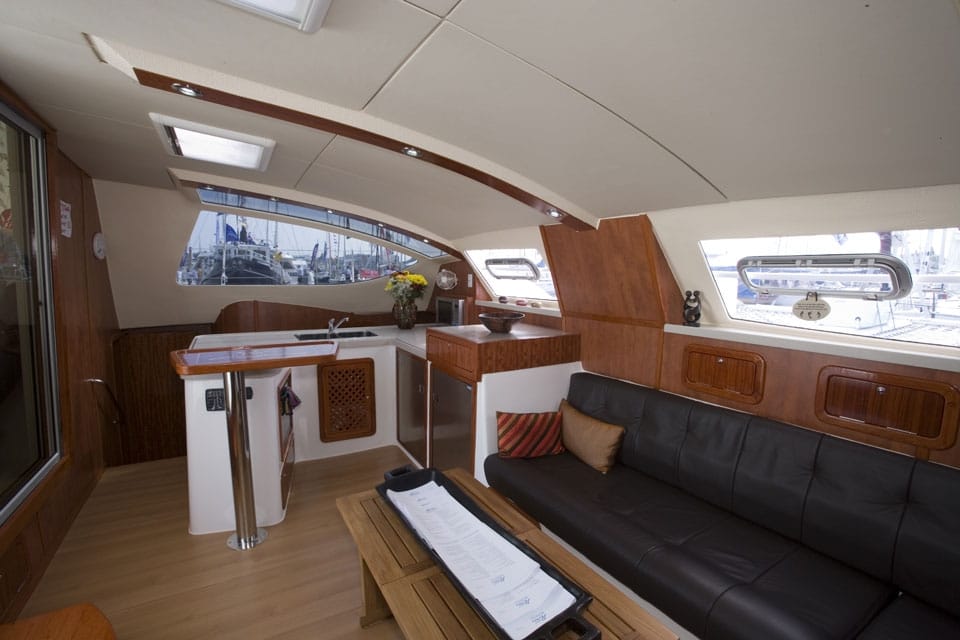
Admiral 40, 2007 Cruising World Sailboat Show
